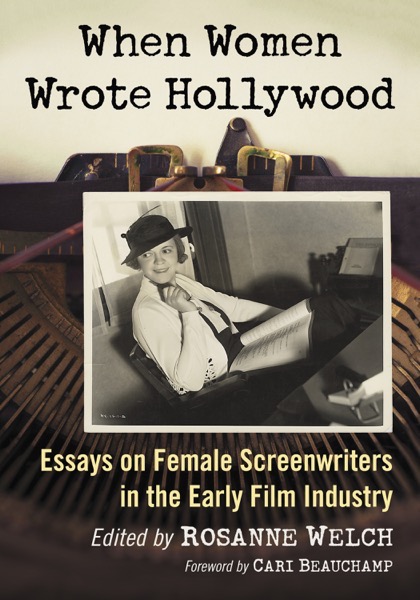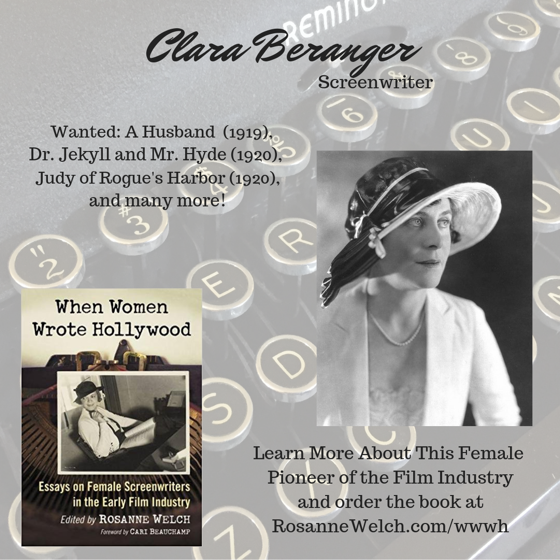Granita at Ammu #food #travel #ammu #granita #summer #estate via Instagram
Prima Colazione (Breakfast) in Milano via Instagram
I would make a great digital vagabond. I can work almost anywhere via Instagram
This is Zurich airport as we wait for our short flight hop to Milan.
Zurich Airport is clean and pretty via Instagram
Working while we wait via Instagram
Power and WiFi make Jill (Rosanne) a productive girl. #travel #lax #swissair via Instagram
Of to Milan via Zurich tonight via Instagram
Feeling quite cosmopolitan heading off to Europe again. The SRN (Screenwriting Research Network) Conference gives us a reason — and college support — to go so many interesting places — like last year’s trip to New Zealand. #swissair #swiss #switzerland #italy #milan #milano #travel #srnconference2018 #srnconference via Instagram
16 Princess Rescuing The Princes from How The Monkees Changed Television [Video] (0:54)
Rosanne Welch, PhD, Author of Why The Monkees Matter, presents “How The Monkees Changed Television” at a Cal State Fullerton Lunch Lecture on May 8, 2018.
In this talk, she shows how The Monkees, and specifically their presence on television, set the stage for large changes to come in the late 1960s.
Transcript
She turns down the cute boy to do her job. Her job and her responsibility is being queen. Right? That’s what she’s become/ It’s not about can I get the cute boy? And I’m like Wow! Every girl in America would have said yes to the cute boy. So that was an interesting, to me, feminist thought that you should think about your position and what you’re there to do in the world. It’s not just to make some boy happy. Right? And then she invites him to come and it’s kind of cute because he says “No. What I have to do is here with the guys and our music. We have to spread our message through the world in music.” So even he is led by his purpose in the world not by “Who am I going to have sex with this week.” So I think that’s really kind of a big statement for a TV show that I was watching as a kid. My thesis at the end of the book is, if you were a girl watching in 1966, you learned that to get a Monkee you didn’t want to be a cheerleader. You wanted to be a woman of value.
Why The Monkees Matter: Teenagers, Television and American Pop Culture
McFarland (Direct from Publisher) | Amazon | Kindle Edition | Nook Edition
Want to use “Why The Monkees Matter” in your classroom?
Order Examination Copies, Library and Campus Bookstore orders directly from McFarland
About Rosanne Welch, PhD
Rosanne Welch, PhD is a writer, producer and university professor with credits that include Beverly Hills 90210, Picket Fences, Touched by an Angel and ABC NEWS/Nightline. Other books include Why The Monkees Matter: Teenagers, Television and American Pop Culture (McFarland, 2017) and Women in American History: A Social, Political, and Cultural Encyclopedia and Document Collection (ABC-CLIO, 2017), named to the 2018 Outstanding References Sources List, by the Reference and User Services Association (RUSA), a division of the American Library Association. Welch has also published chapters in Torchwood Declassified: Investigating Mainstream Cult Television (I.B.Tauris) and The American Civil War on Film and TV: Blue and Gray in Black and White and Color (Lexington Books, 2018) and essays in Doctor Who and Race: An Anthology and Outside In Makes it So, and Outside in Boldly Goes (both edited by Robert Smith). By day she teaches courses on the history of screenwriting and on television writing for the Stephens College MFA in Screenwriting programs. Her talk “The Importance of Having a Female Voice in the Room” at the 2016 TEDxCPP is available on YouTube.
Podcast: Play in new window | Download
Subscribe: RSS
Lauren Elizabeth Smith, Author of “Fearless and Fierce: June Mathis” from “When Women Wrote Hollywood” [Video] (4:02)
Watch the complete When Women Wrote Hollywood Book Launch Event
When Women Wrote Hollywood Book Launch Event
August 11, 2018 at the Jim Henson Studios, where the Stephens College MFA in TV and Screenwriting program resides.
These 23 essays cover a range of female screenwriters from the early years of film through the 1940s, women whose work helped create the unforgettable stories and characters beloved generations of audiences but whose names have been left out of most film histories. Not this one. This collection is dedicated to those women and written by a group of women grateful to stand on the shoulders of those who came before – as a beacon to those who will come after.
Many thanks to the essay contributors who joined us and spoke so eloquently about the women writers they had researched: Toni Anita Hull, Laura Kirk, Amelia Phillips, Sarah Phillips, Julie Berkobien, Khanisha Foster, Lauren Smith, and to Cari Beauchamp, who wrote the Forward to the collection.
Buy a signed copy of when Women Wrote Hollywood
Paperback Edition | Kindle Edition | Google Play Edition
* A portion of each sale from Amazon.com directly supports our blogs
** Many of these books may be available from your local library. Check it out!
† Available from the LA Public Library
Podcast: Play in new window | Download
Subscribe: RSS
When Women Wrote Hollywood – 26 in a series – Clara Beranger

When Women Wrote Hollywood – 26 in a series – Clara Beranger
Clara Beranger (also Berenger, née Strouse, January 14, 1886 – September 10, 1956) was an American screenwriter of the silent film era and a member of the original faculty of the USC School of Cinematic Arts.
Using the pseudonym of Charles S. Beranger, her first screen employment was as a freelancer, writing for the Edison, Vitagraph and Kalem companies, to whom she furnished many originals as well as continuities. Her success attracted some attention and she was appointed as a staff writer for the Fox Corporation. She wrote several scripts for the popular child star Baby Marie Osborne as well as a much-praised adaptation of A Tale of Two Cities. Beranger also wrote The Interloper for Kitty Gordon, The Bluffer for June Elvidge and The Mirror for Marjorie Rambeau, though many of these films are considered lost.[3] With Forrest Halsey, Beranger wrote the stage play, His Chinese Wife, which received good reviews and became one of the successes of the 1919–1920 season.[3]
In 1921, Clara took Frances, then twelve, and migrated to Hollywood to write for motion pictures,[1] where she signed a long contract with Cecil B. DeMille’s Famous Players-Lasky; the outfit with whom she is most associated. She wrote or contributed to more than 24 DeMille productions, and produced both Come Out of the Kitchen and Girls for Marguerite Clark; Sadie Love and Wanted: A Husband for Billie Burke; Judy of Rogue’s Harbor for Mary Miles Minter; The Fear Market for Alice Brady; The Cost for Violet Heming; Half an Hour for Dorothy Dalton; Civilian Clothes for Thomas Meighan, Notoriety for Bebe Daniels and the long-lasting classic Dr. Jekyll and Mr. Hyde for John Barrymore.[3] — Wikipedia
Watch a movie by Clara Beranger
More about Clara Beranger
- Read more about this screenwriter in When Women Wrote Hollywood
- Like When Women Wrote Hollywood on Facebook
- Clara Beranger on Wikipedia
- Clara Beranger on IMDB
- Clara Beranger at the Women Film Pioneers Project
Buy a signed copy of when Women Wrote Hollywood
Paperback Edition | Kindle Edition | Google Play Edition
* A portion of each sale from Amazon.com directly supports our blogs
** Many of these books may be available from your local library. Check it out!
† Available from the LA Public Library
Khanisha Foster, Author of “The Nature and Genius of Alice Guy Blaché” from “When Women Wrote Hollywood” [Video] (2:56)
Watch the complete When Women Wrote Hollywood Book Launch Event
When Women Wrote Hollywood Book Launch Event
August 11, 2018 at the Jim Henson Studios, where the Stephens College MFA in TV and Screenwriting program resides.
These 23 essays cover a range of female screenwriters from the early years of film through the 1940s, women whose work helped create the unforgettable stories and characters beloved generations of audiences but whose names have been left out of most film histories. Not this one. This collection is dedicated to those women and written by a group of women grateful to stand on the shoulders of those who came before – as a beacon to those who will come after.
Many thanks to the essay contributors who joined us and spoke so eloquently about the women writers they had researched: Toni Anita Hull, Laura Kirk, Amelia Phillips, Sarah Phillips, Julie Berkobien, Khanisha Foster, Lauren Smith, and to Cari Beauchamp, who wrote the Forward to the collection.
Buy a signed copy of when Women Wrote Hollywood
Paperback Edition | Kindle Edition | Google Play Edition
* A portion of each sale from Amazon.com directly supports our blogs
** Many of these books may be available from your local library. Check it out!
† Available from the LA Public Library
Podcast: Play in new window | Download
Subscribe: RSS






![16 Princess Rescuing The Princes from How The Monkees Changed Television [Video] (0:54)](https://rosannewelch.com/wp-content/uploads/2018/09/monkees-tv-16-princess-saves-princes.jpeg)


![Lauren Elizabeth Smith, Author of “Fearless and Fierce: June Mathis” from “When Women Wrote Hollywood” [Video] (4:02)](https://rosannewelch.com/wp-content/uploads/2018/09/w3h-smith.jpeg)


![Khanisha Foster, Author of “The Nature and Genius of Alice Guy Blaché” from “When Women Wrote Hollywood” [Video] (2:56)](https://rosannewelch.com/wp-content/uploads/2018/09/w3h-khanisha-foster.jpeg)